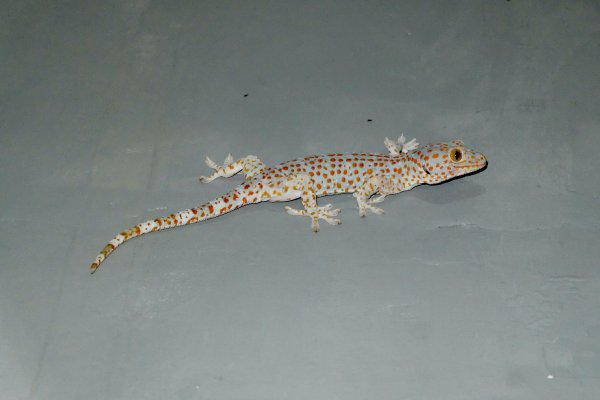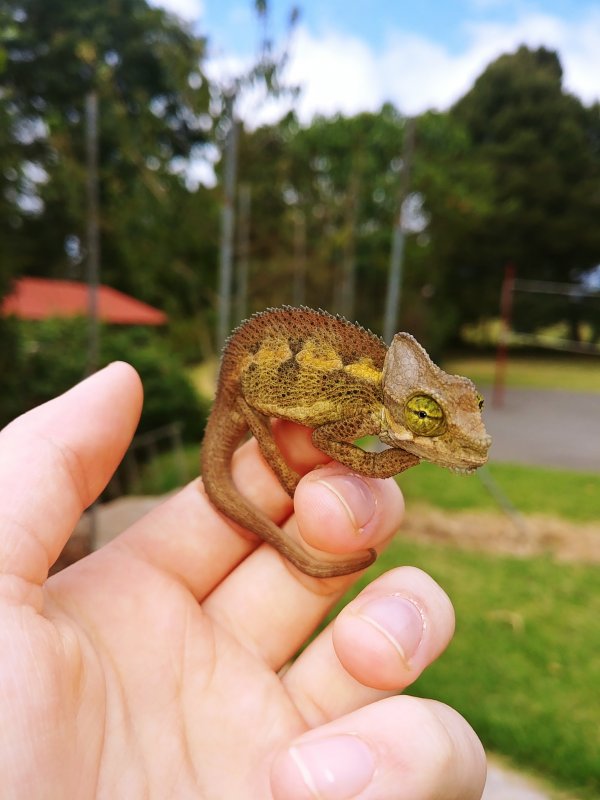Why Do Lizards Fall?
If you have had a lizard fall on you, or are just curious about them, you may wonder why they fall…
Why Do Lizards Fall?
Many lizards are equipped for climbing, with ‘spatulae’, which are essentially micro-hair covered adhesive pads, on their feet. While they have the ability to climb, this doesn’t always mean that they are successful and a wrong step or even dirt on the surface can cause a lizard to slip and fall.
| Are these foods dangerous for your Beardie? | |
| Avacado? Click here to learn, from this guide, if this food is dangerous |  |
| Superworms? Click here to learn, from this guide, if this food is dangerous |  |
So, now you know. But, what causes them to fall off a wall? Can they die from falling? Can they walk on ceilings? Keep reading for these answers, and much more…
Do lizards fall on their feet when they fall?
Typically, they will land on their feet, as twisting their tail in mid-fall helps to right them so that they will land this way. So, ultimately, it’s safe to say that lizards were designed to climb… and to safely fall!
How do lizards stick to a ceiling?

An orange spotted white lizard on the floor.
Lizards are equipped with tiny hairs on the sticky pads on their feet which are called ‘spatulae’. These spatulae allow them to cling to different surfaces with relative ease so that they can climb up to where they like to hunt or even simply get a little sun.
These foot pads are efficient enough that many lizards can walk upside-down on the ceiling with a certain amount of success, though it’s not uncommon for them to fall from time to time in the process of attempting this.
Why Do lizards fall off the wall?
Lizards can fall off the wall for a number of reasons. For instance, dirt or debris on the surface of the wall may cause them to lose their footing. A lizard might also become startled or excited after spotting potential prey and move too quickly, losing adhesion to the wall and falling down.
If they meet another lizard on the fall, then fighting is a possibility for causing a fall, or even attempting to mate. While they are pretty adept climbers, wall climbing is tricky and so falling lizards are actually quite common.
Do lizards die from falling?
Due to their small size in relation to the air resistance when they are falling, lizards are quite capable of surviving falls from very high places – especially if there are grasses or other soft places to land. When falling, the landing is less dangerous than the very real chances of being spotted by an opportunistic bird!
Lizards are not only likely to survive the fall, but like a cat, they will almost always land on their feet. By twisting their tails around in mid-air, they can control how they land and after a moment of surprise, they will swiftly scurry away to somewhere safe.
Why Do lizards fall from trees?
While it’s uncommon, lizards can and do fall from trees. Most often with small lizards, it has to do with escaping a predator or the result of fighting with another lizard but there is another common reason – the cold!
This happens a lot in Florida when a cold snap hits the area, the Iguanas that are hiding in trees and unable to regulate their temperatures fall into an immobile torpor from the cold. This causes them to fall out of the tree and while they appear dead, they’re usually not.
Their bodies are just slowing down as a survival mechanism in response to the (hopefully temporary) cold to which they’ve been exposed for too long.
Are lizards afraid of humans?

A brown chameleon on a human finger.
While there are exceptions, most lizards are indeed afraid of humans and will run when they spot one of us. It’s different, however, if we are staying still or sleeping. In such cases, lizards will move around as they like, even walking over a sleeping human if they don’t perceive a threat.
This is most common with smaller lizards, however, and the larger the lizard, the less likely they are to be afraid of humans unless they’ve had a bad experience. Extremely large lizards, such as Komodo Dragons, aren’t afraid of humans at all and in zoos, they’ll sometimes run aggressively towards the glass at one!
That said, most lizards are going to react to humans by viewing us as predators, running, and hiding immediately.
Can lizards walk on ceilings?
While just about all lizards can climb, walking on the ceiling is much more difficult, and so only a handful of lizards are going to be able to adeptly do this. Geckos are a good example of lizards that can and do walk across ceilings.
Geckos are able to do this by the means of tiny hairs on their feet that are small enough that they are invisible to the naked eye. These allow the Geckos to get a better grip on the surface so that they can move slowly and still support their body weight as they move across the ceiling.
These hairs, called Spatulae, work to make the pads of their feet quite efficient for this and they densely coat the feet of the Gecko. There are billions of them, at a size of 200 nanometers each, so the density and the results should give you a good mental image of just how tiny these spatulae really are!
Do lizards purposely fall on you in the night?
Sometimes lizards will hop down onto you if that’s the most expedient route for getting to where they want to go, but usually only if you are sleeping. Most times they are going to avoid humans, as they view us simply as large, potential predators.
More often, when a lizard falls on you at night it has to do with a bumpy or dirty part of the ceiling causing them to lose their footing and or be startled or fighting with another lizard on the ceiling. Sometimes it’s just because they’ve gotten tired and fallen asleep up there!
While there are certainly going to be the occasional lizards falling on top of you for a thrill, it is much more likely that they’ve simply lost their footing and gravity has brought them your way.
Do lizards have wet sticky feet or is it dry?
Lizard feet are dry to the touch. The tiny hairs that allow them to stick to the wall are called ‘spatulae’ and there are billions of them on each foot. Due to their small size (they actually measure in nanometers!), these little hairs act like a dry adhesive, allowing the lizard to ‘stick’ without being ‘sticky’.
If you have ever played with the octopus-shaped rubber sticky toys that roll down a wall, the concept is similar, but on a very tiny level. When the lizard steps on the wall, the spatulae essentially roll out, each little hair sticking to a part of the surface and peeling off when the lizard moves their foot.
This allows them to support their body weight and to move effectively across the wall, with the spatulae being too small to leave any noticeable residue to mark their passing.
Do lizards come out at night?
Actually, most lizards are diurnal, meaning that they are most active during the daytime and that they tend to hide away and rest at night. There are exceptions, of course, as there are many different species of lizards, but most prefer to be active during the day.
Sometimes you will see them moving in your home at night, and in cases like this, they are generally finding a dark place to sleep where they will feel safe or they could be chasing an insect that they’ve spotted on the wall.
While they prefer to hunt in the daytime, they are opportunistic feeders, so they don’t mind getting up to have the occasional snack in the middle of the night.